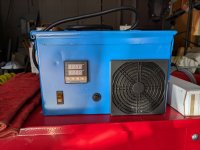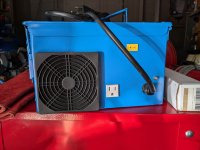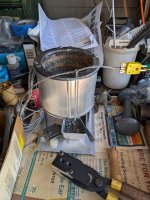Hi fellows
I understand this question has been asked a gazillion times here but I'm not so sure it's been specific for this gun. I finally got a big bore and am super stoked about shooting it.
But I quickly learned that big bore bullets are not cheap. I'm really interested in what all it would take for me to start making my own bullets for my AEA .457 Challenger.
I know I need lead, a melting pot, and bullet mold. But here in lies the real kicker. I need all the information I can get from anyone who owns and shoots a AEA big bore to help me decide which mold might be best for my gun. I do know it shoots great with anything I've tried from Mr. Hollowpoint. It favors the 300gr and the 260gr. Any information you men can shed on this subject would be super helpful and I would appreciate it a ton.
Thx
Ray
I understand this question has been asked a gazillion times here but I'm not so sure it's been specific for this gun. I finally got a big bore and am super stoked about shooting it.
But I quickly learned that big bore bullets are not cheap. I'm really interested in what all it would take for me to start making my own bullets for my AEA .457 Challenger.
I know I need lead, a melting pot, and bullet mold. But here in lies the real kicker. I need all the information I can get from anyone who owns and shoots a AEA big bore to help me decide which mold might be best for my gun. I do know it shoots great with anything I've tried from Mr. Hollowpoint. It favors the 300gr and the 260gr. Any information you men can shed on this subject would be super helpful and I would appreciate it a ton.
Thx
Ray


